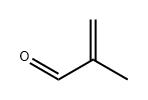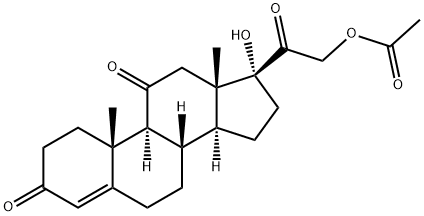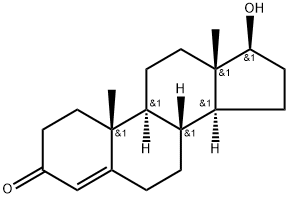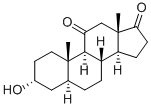12-Methyltridecanal
- CAS NO.:75853-49-5
- Empirical Formula: C14H28O
- Molecular Weight: 212.37
- MDL number: MFCD10000650
- EINECS: 203-706-9
- SAFETY DATA SHEET (SDS)
- Update Date: 2024-11-20 15:18:15

What is 12-Methyltridecanal?
Description
12-Methyltridecanal, also known as 12-MT aldehyde or isotetradecan-1-al, belongs to the class of organic compounds known as fatty aldehydes. These are long chain aldehydes with a chain of at least 12 carbon atoms. Thus, 12-methyltridecanal is considered to be a fatty aldehyde lipid molecule. 12-Methyltridecanal is considered to be a practically insoluble (in water) and relatively neutral molecule. 12-Methyltridecanal has been primarily detected in urine. Within the cell, 12-methyltridecanal is primarily located in the membrane (predicted from logP) and cytoplasm. 12-Methyltridecanal has a broth, cooked, and cooked meat taste.
Chemical properties
12-Methyltridecanal has an aroma characteristic of stewed beef (meaty, tallow)
Occurrence
Stated to be of natural origin; has not been reported in any food items by TNO (Nutrition and Food Research) (TNO, 2000)
The Uses of 12-Methyltridecanal
12-Methyltridecanal (MT) smelling tallowy, beef-like was formed from plasmalogens when beef was boiled. It was found in microorganisms samples isolated from beef.
Biosynthesis
It is believed that 12-methyltridecanal is preferentially a constituent of ruminants, possibly being synthesized by the bacteria in the rumen, andincorporated in the plasmalogens.
Aroma threshold values
Detection at 0.0001 ppm (water)
Properties of 12-Methyltridecanal
| Melting point: | 25°C (estimate) |
| Boiling point: | 282.23°C (estimate) |
| Density | 0.8321 (estimate) |
| refractive index | 1.4385 (estimate) |
| FEMA | 4005 | 12-METHYLTRIDECANAL |
| storage temp. | Inert atmosphere,Store in freezer, under -20°C |
| solubility | Chloroform (Slightly), Methanol (Slightly) |
| form | Oil |
| color | Colourless |
| Odor | at 1.00 % in propylene glycol. cooked meat tallow fat meat broth sweat fruity waxy citrus |
| JECFA Number | 1229 |
Safety information for 12-Methyltridecanal
| Signal word | Warning |
| Pictogram(s) |
 Exclamation Mark Irritant GHS07 |
| GHS Hazard Statements |
H315:Skin corrosion/irritation H319:Serious eye damage/eye irritation |
| Precautionary Statement Codes |
P280:Wear protective gloves/protective clothing/eye protection/face protection. P302+P352:IF ON SKIN: wash with plenty of soap and water. P305+P351+P338:IF IN EYES: Rinse cautiously with water for several minutes. Remove contact lenses, if present and easy to do. Continuerinsing. P332+P313:IF SKIN irritation occurs: Get medical advice/attention. P337+P313:IF eye irritation persists: Get medical advice/attention. |
Computed Descriptors for 12-Methyltridecanal
New Products
4-AMINO-TETRAHYDRO-PYRAN-4-CARBOXYLIC ACID HCL 4-(Dimethylamino)tetrahydro-2H-pyran-4-carbonitrile 4-Aminotetrahydropyran-4-carbonitrile Hydrochloride (R)-3-Aminobutanenitrile Hydrochloride 3-((Dimethylamino)methyl)-5-methylhexan-2-one oxalate 1,4-Dioxa-8-azaspiro[4.5]decane 5-Bromo-2-nitropyridine Nimesulide BP Aceclofenac IP/BP/EP Diclofenac Sodium IP/BP/EP/USP Mefenamic Acid IP/BP/EP/USP Ornidazole IP Diclofenac Potassium THOMAIND PAPER PH 2.0 TO 4.5 1 BOX BUFFER CAPSULE PH 9.2 - 10 CAP SODIUM CHLORIDE 0.1N CVS ALLOXAN MONOHYDRATE 98% PLATINUM 0.5% ON 3 MM ALUMINA PELLETS (TYPE 73) LITHIUM AAS SOLUTION 2-Bromo-1-(bromomethyl)-3-chloro-5-nitrobenzene 2-Bromo-3-nitroaniline N-(3-Hydroxypropyl)-N-methylacetamide 3-Bromo-6-chloropyridazine 4-ethyl-3-nitrobenzoic acidRelated products of tetrahydrofuran








You may like
-
 12-Methyltridecanal CAS 75853-49-5View Details
12-Methyltridecanal CAS 75853-49-5View Details
75853-49-5 -
 1-Methyl-6-oxo-1,6-dihydropyridazine-3-carbonitrile 98%View Details
1-Methyl-6-oxo-1,6-dihydropyridazine-3-carbonitrile 98%View Details
99903-60-3 -
 1823368-42-8 98%View Details
1823368-42-8 98%View Details
1823368-42-8 -
 2-(3-(tert-butyl)phenoxy)-2-methylpropanoic acid 1307449-08-6 98%View Details
2-(3-(tert-butyl)phenoxy)-2-methylpropanoic acid 1307449-08-6 98%View Details
1307449-08-6 -
 Ethyl 3-(furan-2-yl)-3-hydroxypropanoate 25408-95-1 98%View Details
Ethyl 3-(furan-2-yl)-3-hydroxypropanoate 25408-95-1 98%View Details
25408-95-1 -
 2-Chloro-5-fluoro-1-methoxy-3-methylbenzene 98%View Details
2-Chloro-5-fluoro-1-methoxy-3-methylbenzene 98%View Details
1805639-70-6 -
 1784294-80-9 98%View Details
1784294-80-9 98%View Details
1784294-80-9 -
 Lithium ClavulanateView Details
Lithium ClavulanateView Details
61177-44-4